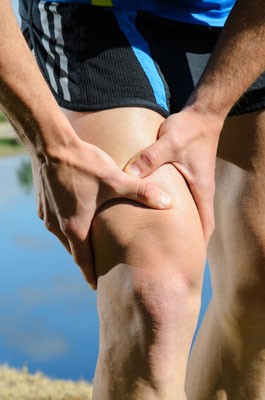1. Jogging impact on the knee?
People think that running will push pressure on your knees because you have to land on your feet continuously. But this is completely wrong. Contrary to the above, there is research showing that runners have a much lower incidence of joint problems or osteoarthritis than non-runners

Daniel Belirl, Ph.D., an associate professor from the Institute of Physical Activity and Nutrition and researchers from Deakin University in Australia studied 101 men and women from 25 to 35 years old. They found that those who had a habit of running more than 20km a week had "younger" bone marrow eight years more than those who were sedentary and did not regularly exercise. The reason given is that jogging helps increase surrounding muscle and bone thickness.
2. Breathing properly when jogging?
Regardless of your breathing and running intensity, the most important thing is to focus on deep, conscious breathing so you can increase the time you inhale and exhale. Here are some rules given by breathing experts:
| Rhythm | Explanation | |
| Low intensity running track | 3:3 | 3 steps inhaling and 3 steps exhaling |
| Medium intensity running track | 2:2 | 2 steps inhaling and 2 steps exhaling |
| High intensity running track | 1:1 | 1 step breathing in and 1 step breathing out |
These ratios should only be used as a regular rule and do not apply to all runners. The best way is to try a few different breaths in each run and find out which one feels most comfortable for you.
3. What to wear in a marathon?
On race day, wear the comfortable shoes and clothing you wore during exercise. Do not wear anything new that has not been tested, as it may cause an allergic reaction or even injury. Most people when running wear shorts or stretchy spandex pants, T-shirts, socks and shoes.
4. Is it okay to stop to walk?
If your purpose is winning the rank or time constraints, the answer is no. If you just want to enjoy the route, relaxed and your goal is just to finish the race no matter how long it takes, the answer is yes - walking is okay as long as youl get to your destination.
Walking is also recommended under certain conditions that make continuous running dangerous, such as hot and humid weather or if you are injured (or about to be injured if you continue to run).
5. Should join the jogging club?
Many runners like to practice on their own, either because they are introverted or simply because they are busy with time constraints. To make sure running can be a habit, you need to be a strict discipline person, know how to motivate yourself, know what you want and what you're doing, if not, find yourself register a jogging club as a member won't be a bad idea. When you are in a club, you have someone to run with, someone who will guide you through meticulous methods or nutrition about running, which you get more than just running. In Vietnam, jogging clubs are increasingly expanding and professional in scope, find yourself a suitable club to share jogging interests together.


